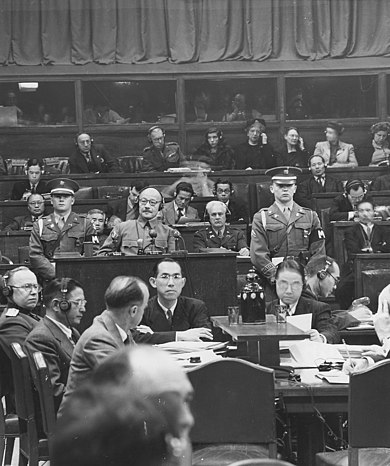On November 20, 1945, the Nuremberg war crimes trial
begins. Following Germany's defeat in World War II, Winston Churchill planned
to shoot top German and Nazi military leaders without a trial, but Henry
Stimson, the U.S. Secretary of War, pushed President Roosevelt to consider
holding an international court trial. Since the trial did not begin until after
the death of President Roosevelt, President Harry S. Truman appointed Supreme
Court Justice Robert Jackson to head the prosecution team. The four countries
pressing charges were Great Britain, the United States, the Soviet Union, and
France.
In his opening statement, Robert Jackson summarized the
significance of the trial. "That four great nations flushed with victory
and stung with injury, stay the hand of vengeance and voluntarily submit their
captive enemies to the judgment of law," said Jackson, "is one of the
significant tributes that power has ever paid to reason."
The trials attempted to hold Nazi and German military
officials accountable for atrocities including the massacre of 30,000 Russians
during the German invasion and the massacre of thousands of others in the
Warsaw Ghetto. Twenty-four defendants were tried, including Hermann Goering,
the designated successor to Hitler, and Rudolf Hess, Hitler's personal
secretary. All defendants pleaded not guilty to the charges. When one of the
defendants demanded that an anti-Semitic lawyer represent him, an ex-Nazi was
assigned to his defense. Because of the mountains of evidence and language
barriers, the trial was beset with logistical problems. Nineteen defendants
were convicted: 12 were sentenced to hang, and the rest were sent to prison. Herman
Goering escaped hanging by committing suicide. On October 16, 1946, 10 former Nazi
officials were hanged.
Michael Thomas Barry is a
columnist for CrimeMagazine.com and is the author of Murder and Mayhem 52 Crimes that
Shocked Early California
1849-1949. The book can be purchased from Amazon through the
following link:








